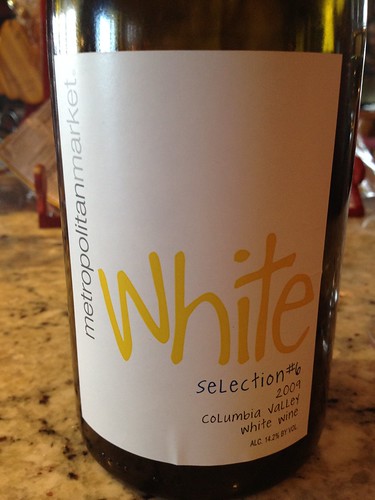Best White Wine for Cooking
As a pantry staple for many cooks, white wine is versatile. You can use it in risotto for a good touch of acidity or add it to a pot of shellfish just before you put the lid on for steaming.
When it comes to cooking, what you need is a white wine with high acidity. This is known in the wine parlance as ‘Crisp’. Pinot Grigio, Pinot Gris, Pinot Blanc, Sauvignon Blanc, Semillon, and other dry sparkling wines are good with food. These are dry white wines that aren’t sweet.
Chardonnays, that are fuller white wines with strong oaky flavors do not work well for cooking. They do not lend as much punch as crisper wines since they are lower in acidity.
Splashing White Wine
White wine is usually added at the start of cooking since it contains alcohol. This gives alcohol a chance to burn off. Splashing a dash of wine at the end of cooking will result in an unpleasant raw taste of wine.
Storing Wine for Cooking
The unopened bottles of white wine should be stored in a cool and dark place. The wine will begin to oxidize once it is opened and this will adversely affect flavor. Therefore, recork the wine bottle that is opened and refrigerate them for slowing down the oxidation process. Also ensure that you use the opened bottles within a few days.
Getting Past the Grocery Stores
Cooking with white wine brings balance. It adds fruit and acidity to several favorite recipes. Get past the grocery store and introduce moderately priced white wine into the equation. Exponentially expand your cooking style. Here are some great wines that are wonderful for cooking.
The Five Best White Wines that are Great for Cooking
The rich and oaky white wines become bitter during the cooking process and the sweeter wines are found to caramelize during deglazing or add an unwanted sweetness to certain types of dishes. With cooking, wines become an integrated part of the whole dish. The most versatile white wine to cook is dry and crisp.
- Crisp White Wine – This is your go-to category. Choose a crispy white wine having moderate alcohol content, like Sauvignon Blanc, Pinot Grigio or Unoaked Chardonnay. Pinot Grigio is the most neutral of the three and the most versatile. With racy acidity, Sauvignon Blanc is particularly delicious in seafood dishes. However, Chardonnay of the three contributes the most richness.
Highly alcoholic wines without the necessary acidity take longer to reduce and lose on the bright, tenderizing effects we are after.
- Dry Sherry – You should always keep a bottle of Dry Sherry in kitchen at all times. How about finishing a pot of chicken or cauliflower soup with a dash of Dry Sherry! This can brighten the soup and add a layer of dimension. It is great for deglazing. Sherry will bring depth to a cream sauce that is brilliant alongside appetizers like oysters.
The Taylor Wine Company Dry Sherry, New York is a great pick for Sherry to cook with.
- Dry Marsala – Branch out and try incorporating this complex, dry wine in braised preparations. It is delicious in a classic chicken or veal Marsala. Marsala wine in the decadent Italian dessert Zabaglione is a favorite to use.
The Cantine Florio Fine Marsala Dry, Sicily, Italy is a great pick for Marsala to cook with.
- Sparkling Wine – Sparkling wine perfectly suits for a sorbet or Champagne vinaigrette. It is also a great substitute for dry, white wine in Beurre Blanc. You can see the bubbles dissipate when cooked. It provides a great opportunity to use up leftover bubbly after a party.
The Poema Cava, Brut, Penedes, Spain is a great pick for Sparkling Wine to cook with.
- Dry Madeira – The Madeira is a Portuguese fortified wine from the islands of Madeira and is produced in four distinct styles. “Sercial”, is a dry style that is most suitable and doubles up as a refreshing aperitif. Madeira can be used in sauce and a savory addition to gravy. It can also be used as a substitute for Sherry in almost any recipe.
Cossart Gordon & Co. 5 Year OldSercial Madeira, Protugal is an ideal pick for Madeira to cook with.
Avoid Wines Labeled Cooking Wines
Even though it seems counterintuitive, avoid purchasing white wines labelled as ‘Cooking Wines’. Cooking Wines often contain salt and other additives. Instead, choose unoaked, dry, and medium-bodied white wines that work best for cooking.
Alcohol-Free Options for Cooking
If you do not want to use alcohol, there are alcohol-free options available for cooking. Verjus is a good option that almost mimics white wine. It is the pressed juice of unripe grapes. Another great choice that you already have on hand is the good old chicken or vegetable stock, enhanced with a dash of lemon or vinegar.
